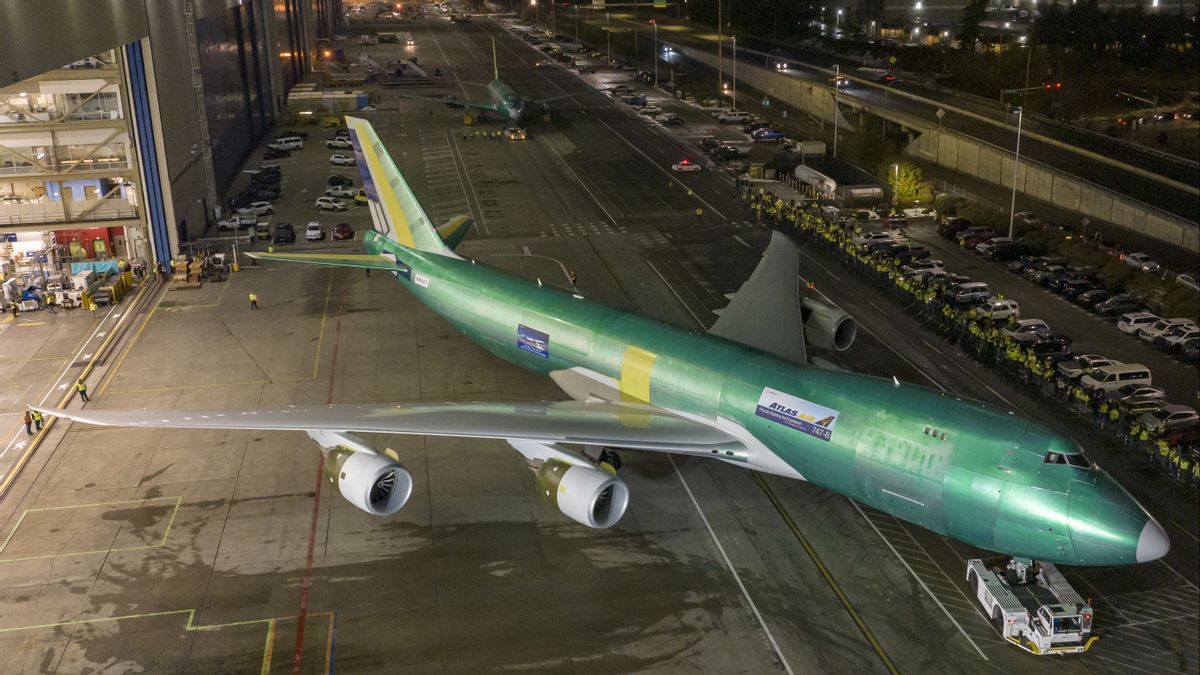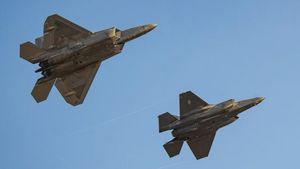The last jumbo Boeing 747 jet left the aircraft manufacturer in Everett, Washington, ending its production process for more than half a century for a two-story, four-engine, double-cavity pioneer that started operations in January 1970.
Langkah itu dilakukan ketika Boeing yang berbasis di Amerika Serikat beralih ke pesawat jet bermotor dua di tengah pendorong maskapai untuk pesawat yang lebih hemat bahan bakar.
The last aircraft is a 747-8 transport plane to be delivered to the Atlas Air cargo airline in early 2023, Boeing said Wednesday.
"For more than half a century, tens of thousands of dedicated Boeing employees have designed and built extraordinary aircraft that have truly changed the world," said Kim Smith, vice president and general manager of Boeing for program 747 and 767.
"We are proud that this aircraft will continue to fly across the world over the years to come."
"Queen of Langit" Boeing debuted more than 50 years ago. The passenger version has a spiral ladder that leads to a luxurious upward lounge.
Meanwhile, the cargo model displays an open headless nose to load everything, from cars to oil drilling equipment.
747 is the world's largest commercial aircraft and set several records, until the Airbus A380 arrived in 2007.
The Boeing 747 was the first plane to have flatbed seats, spearheaded by British Airways in 1999.
Next, Qantas used the jet for the world's first non-stop commercial flight from London to Sydney within 20 hours and nine minutes.
The 30-year record was only broken in 2019, when Qantas operated 787 Dreamliners from London to Sydney in 19 hours 19 minutes.
In addition, the Boeing 747 made its first transatlantic passenger flight from New York to London in May 1970, carrying 350 passengers, a record at the time.
Boeing said a total of 1,574 747 aircraft had been built since 1967. The Everett plant was built specifically for jumbo jets in 1967, citing CNBC.
With a length of 76 meters, 747-8 is the longest operating commercial aircraft.
At a distinctive cruising speed, it moves approximately along three FIFA football fields, or NFL football fields, per second, Boeing said.
The 747-8 cargo ship model has a revenue payload of 133.1 tons, enough to transport 10,699 solid gold bars or about 19 million ping-pong balls or golf balls, Boeing continued.
Boeing delivered the first 747 passenger jets in December 1969 to the two no longer-existing airlines TWA and Pan Am, CNN said.
However, Boeing has not made a passenger version of the 747 jet since sending the last to Korean Airlines in 2017.
Currently, there are only 44 passenger versions of the 747 still operating, according to aviation analytics company Cirium. More than half, 25 units, were flown by Lufthansa.
However, there are still 314 Boeing 747 cargo planes used, many of which were originally used as passenger jets before being renovated into cargo planes, according to Cirium.
In particular, the 747 still function as Air Force One and two aircraft that have been assembled are undergoing work to be converted into the next generation of US presidential jets, according to CNN.
The planes won't be delivered for at least four years due to delays.
The high operational costs to the need for aircraft that are more fuel efficient, slowly marginalized 747.
United Airlines and Delta Airlines bid farewell to their 747 fleets years before the COVID-19 pandemic hit, while Qantas and British Airways landed their 747 for good in 2020 during the decline in travel around the world.
"For the first time in more than 50 years we will not have 747 in this facility," Smith said.
It is known that the last fleet of 747 will later be flown by Boeing test pilots, painted and then handed over to cargo airline and charter Atlas Air Worldwide Holdings early next year.
The English, Chinese, Japanese, Arabic, and French versions are automatically generated by the AI. So there may still be inaccuracies in translating, please always see Indonesian as our main language. (system supported by DigitalSiber.id)













